Electric SUVs and crossovers are gaining more traction than ever before. What was once a niche market, hampered by concerns over range limitations and lengthy charging times, has now evolved into a growing segment of the automotive industry. While challenges remain, well-known models like the Hyundai Ioniq 5 and Tesla Model Y are showing consumers just how capable and exciting EVs can be, driving enthusiasm for electric vehicles to new heights.
Today, the market is filled with impressive electric SUVs and crossovers. With the rapid expansion of charging infrastructure and more brands embracing NACS adapter compatibility, the future looks incredibly bright for EVs. But which models truly stand out? Some electric vehicles are so enjoyable and reliable that they leave owners with no regrets, setting new standards for what modern EVs can offer.
10) 2024 Hyundai Ioniq 5
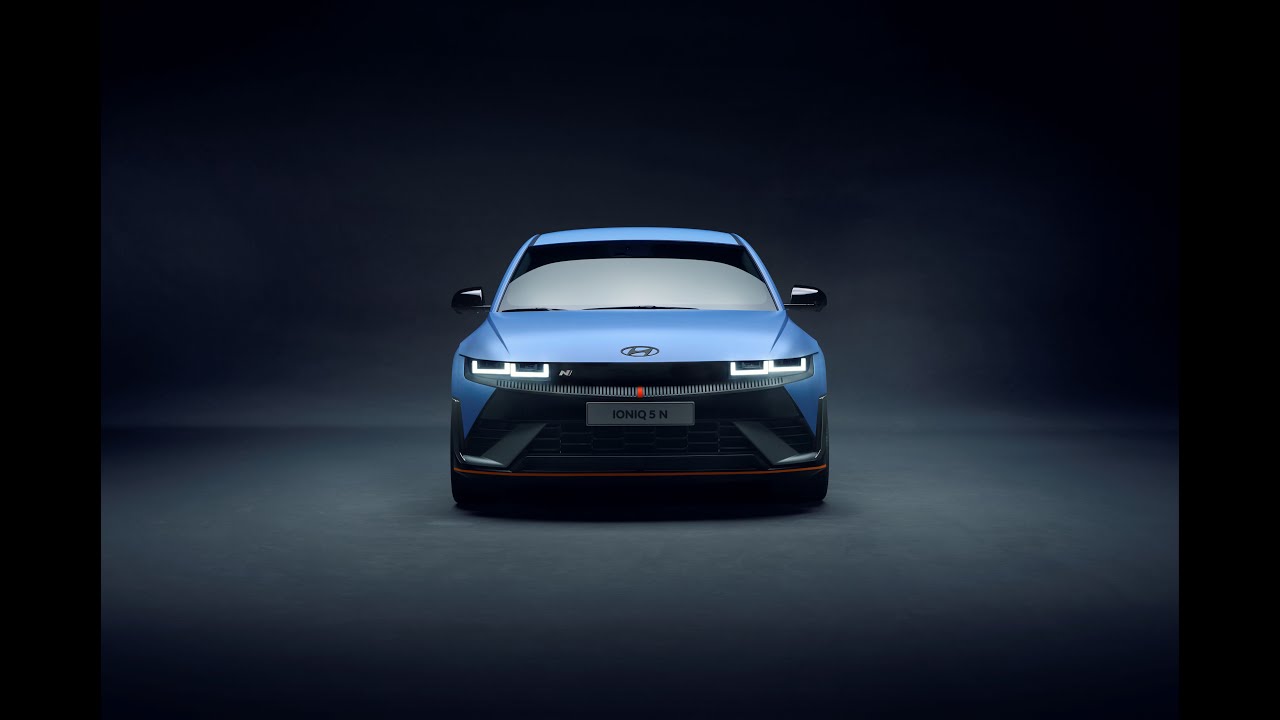
Meanwhile, the 2024 Hyundai Ioniq 5, starting at $41,800, has quickly gained a loyal following. Hyundai’s approach with the Ioniq 5 is all about balance—focusing on driving experience, comfort, and essential features without unnecessary extras. Its clean and minimalistic interior design exemplifies the “less is more” philosophy, making it a World Car of the Year winner for its overall excellence.
The Ioniq 5 SE Standard Range may seem modest at first glance, but it nails the fundamentals. For those seeking more, the second-tier SE trim, priced at $45,850, offers 303 miles of range in its rear-wheel drive version. If opting for the all-wheel drive SE, the range drops to 260 miles, but drivers are rewarded with an impressive 320 horsepower, providing both performance and practicality in one sleek package. The Ioniq 5 truly exemplifies balance in the EV market.
The Hyundai Ioniq 5 is an all-electric crossover that has quickly become one of the most talked-about electric vehicles (EVs) since its debut. With its futuristic design, advanced technology, spacious interior, and impressive electric range, the Ioniq 5 is a standout in the rapidly growing EV market.
It’s part of Hyundai’s Ioniq sub-brand, which focuses on electric mobility, and the Ioniq 5 is the first model built on Hyundai’s dedicated Electric Global Modular Platform (E-GMP). This review will explore the key aspects of the Hyundai Ioniq 5, including its design, performance, interior features, range, charging capabilities, and overall value.
The exterior design of the Hyundai Ioniq 5 is a bold departure from traditional SUV or crossover aesthetics. Its retro-futuristic styling combines clean, sharp lines with a minimalist approach that gives it a unique and instantly recognizable look. The front end is characterized by pixel-inspired LED headlights that give the vehicle a high-tech feel, while the clamshell hood and flush door handles add to its sleek and aerodynamic appearance.
The angular bodywork and large wheel arches emphasize the vehicle’s wide stance, and the short overhangs at both the front and rear give the Ioniq 5 a dynamic profile. The design is modern yet inspired by the past, drawing influence from the 1970s Hyundai Pony, and this blend of old and new makes the Ioniq 5 stand out in the EV segment.
Performance-wise, the Hyundai Ioniq 5 offers multiple powertrain options to suit different driving preferences. The standard model is equipped with a single electric motor driving the rear wheels, producing around 168 horsepower and 258 lb-ft of torque. For those seeking more power, there’s an all-wheel-drive version that features dual electric motors, one on each axle, delivering a combined output of approximately 320 horsepower and 446 lb-ft of torque.
This version can accelerate from 0 to 60 mph in just over 5 seconds, making it one of the quicker EVs in its class. The Ioniq 5’s handling is smooth and refined, with its low center of gravity, thanks to the placement of the battery pack, enhancing stability and control during cornering. While not a performance-focused vehicle, the Ioniq 5 provides a comfortable and engaging driving experience for everyday use.
One of the key selling points of the Hyundai Ioniq 5 is its electric range. Depending on the battery configuration and drivetrain, the Ioniq 5 offers a range between 220 to 303 miles on a single charge, with the longest range coming from the rear-wheel-drive model equipped with the larger 77.4 kWh battery. This range places the Ioniq 5 in direct competition with other top EVs like the Tesla Model Y and Ford Mustang Mach-E.
The Ioniq 5 also features ultra-fast charging capabilities, supporting up to 800 volts, which allows it to recharge from 10% to 80% in as little as 18 minutes using a 350-kW fast charger. For more typical home charging setups, the Ioniq 5 can be charged overnight with a Level 2 charger, making it convenient for daily use.
Inside, the Hyundai Ioniq 5 is designed to feel more like a living space than a traditional vehicle cabin. The interior is spacious and open, with a flat floor thanks to the electric platform, providing ample legroom for both front and rear passengers. The minimalist design continues inside, with a focus on clean lines, high-quality materials, and sustainable elements, including eco-friendly fabrics and recycled plastics.
The dashboard features two large, 12.3-inch screens—one for the digital instrument cluster and the other for the infotainment system—creating a modern, high-tech look. The infotainment system is intuitive and easy to use, supporting Apple CarPlay and Android Auto, as well as offering Hyundai’s Bluelink connected car services. Additional features such as a head-up display with augmented reality (AR) and a premium audio system are available on higher trims.
One of the most innovative aspects of the Ioniq 5’s interior is its versatility. The front seats can recline almost fully, offering a “zero-gravity” position that allows occupants to relax while the vehicle is charging. The rear seats can slide forward or backward to adjust legroom or expand cargo space as needed. The Ioniq 5 offers a decent amount of cargo space, with around 27.2 cubic feet of space behind the rear seats, expanding to 59.3 cubic feet when the rear seats are folded flat. Additionally, there’s a small front trunk (or “frunk”) for extra storage.
When it comes to safety, the Hyundai Ioniq 5 is equipped with a comprehensive suite of advanced driver assistance systems (ADAS) under Hyundai’s SmartSense umbrella. Standard safety features typically include forward collision-avoidance assist, blind-spot monitoring, lane-keeping assist, and adaptive cruise control with stop-and-go functionality.
Higher trims offer more advanced features, such as a surround-view camera, remote smart parking assist, and highway driving assist, which provides semi-autonomous driving capabilities on highways. The Ioniq 5 has received high safety ratings from both the National Highway Traffic Safety Administration (NHTSA) and the Insurance Institute for Highway Safety (IIHS), further adding to its appeal as a family-friendly vehicle.
In terms of value, the Hyundai Ioniq 5 is competitively priced within the electric crossover segment. Its starting price is generally lower than rivals like the Tesla Model Y, and with federal and state EV incentives, the cost can become even more attractive for buyers. The Ioniq 5 also comes with Hyundai’s strong warranty coverage, which includes a 10-year/100,000-mile powertrain warranty and an 8-year/100,000-mile warranty on the battery, providing peace of mind for long-term ownership.
While the Hyundai Ioniq 5 offers many advantages, there are a few potential drawbacks to consider. Some drivers may find the rear visibility limited due to the vehicle’s design, and the large touchscreen can occasionally be distracting while driving. Additionally, while the Ioniq 5 supports ultra-fast charging, access to 350-kW chargers can be limited depending on location, which may be an inconvenience for long road trips.
The Hyundai Ioniq 5 is a game-changer in the electric vehicle market, offering a blend of futuristic design, cutting-edge technology, and practical range. Its spacious and comfortable interior, combined with impressive performance and advanced safety features, make it an excellent choice for those looking to make the switch to electric driving.
With its competitive pricing, strong warranty, and eco-friendly credentials, the Ioniq 5 stands out as one of the best all-electric crossovers currently available, appealing to a wide range of buyers, from tech enthusiasts to environmentally conscious families.
9) 2025 Chevy Equinox EV
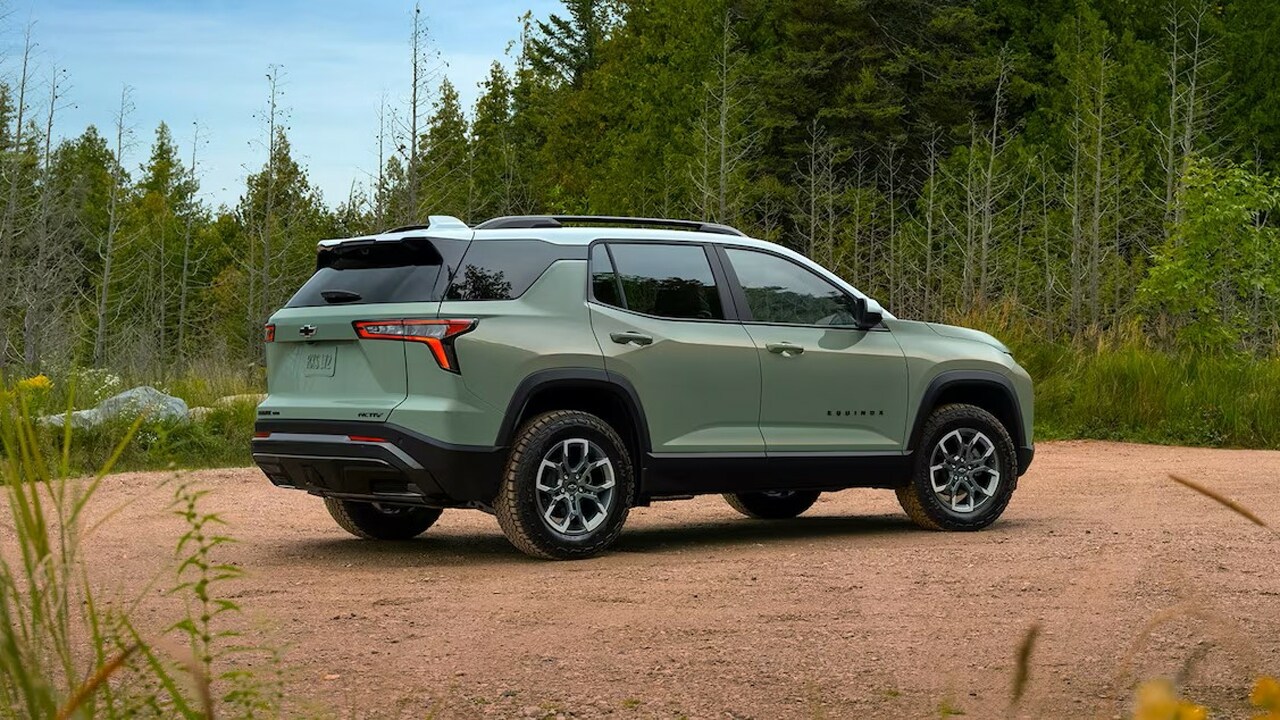
The 2025 Chevy Equinox EV stands out as a highly competitive electric SUV, especially when it comes to value. Starting at just $33,600, it’s one of the most affordable EVs in its class. However, if you’re looking to purchase today, you might find the lowest available model priced at $41,900.
Even so, the Equinox EV offers a driving range that surpasses many of its small electric SUV rivals, making it a great option for those seeking a budget-friendly EV without compromising range. For buyers transitioning from internal combustion engines (ICE) to electric vehicles, the Equinox EV offers an easy and reliable entry point.
The Chevrolet Equinox EV is Chevrolet’s all-electric compact SUV, designed to offer a more affordable and accessible entry into the electric vehicle (EV) market while maintaining the practicality and reliability associated with the Equinox name.
As Chevrolet expands its electric lineup, the Equinox EV aims to bridge the gap between traditional internal combustion engine SUVs and the rapidly growing demand for electric mobility. This review explores the key aspects of the Chevy Equinox EV, including its design, performance, electric range, interior features, safety, and overall value.
The exterior of the Chevrolet Equinox EV presents a sleek and modern design that reflects its all-electric nature while staying true to the recognizable styling of the Equinox family. The front end features a futuristic, closed-off grille that gives the vehicle a clean, aerodynamic look, replacing the traditional grille of gas-powered models. Slim LED headlights and a sculpted hood add to the sporty appearance, while the streamlined body with smooth, flowing lines enhances its overall efficiency.
The rear of the Equinox EV is equally modern, with distinctive LED taillights and a subtle rear spoiler that accentuates the vehicle’s design language. In terms of size, the Equinox EV fits squarely in the compact SUV category, providing a versatile balance of urban maneuverability and family-friendly space.
Performance-wise, the Chevy Equinox EV offers different powertrain configurations depending on the trim level. The base model is equipped with a single electric motor powering the front wheels, delivering around 210 horsepower and 242 lb-ft of torque, making it suitable for daily commuting and light utility tasks. For those seeking more power and capability, there’s an all-wheel-drive (AWD) version with dual motors, offering a more robust 290 horsepower and 346 lb-ft of torque.
This configuration provides faster acceleration and enhanced traction, particularly in challenging weather conditions. The Equinox EV’s electric powertrain delivers smooth and quiet performance, with instant torque available from the electric motors for quick off-the-line acceleration. While it’s not a high-performance vehicle, the Equinox EV offers a comfortable and responsive driving experience, ideal for city driving and highway cruising.
One of the most important factors for any EV is its range, and the Chevy Equinox EV aims to provide a competitive offering in this regard. The front-wheel-drive (FWD) version is expected to deliver a range of approximately 300 miles on a full charge, which places it among the more practical EVs for everyday use. The AWD version offers slightly less range due to its additional power, but it’s still expected to exceed 280 miles per charge.
This range makes the Equinox EV well-suited for a variety of driving scenarios, from daily commutes to longer road trips. Additionally, the Equinox EV supports fast charging, allowing it to regain up to 70 miles of range in just 10 minutes when using a 150-kW DC fast charger, which is a convenient feature for those who need quick top-ups during longer journeys. For home charging, the Equinox EV can be charged overnight using a Level 2 charger, providing a full charge by morning.
Inside, the Chevrolet Equinox EV focuses on practicality, comfort, and technology, offering a spacious cabin with plenty of room for passengers and cargo. The interior design is clean and modern, with high-quality materials and a user-friendly layout.
The dashboard features a large digital display cluster, typically around 11 inches, paired with a 17-inch infotainment touchscreen that seamlessly integrates with Chevrolet’s latest infotainment system. The system includes standard features like wireless Apple CarPlay and Android Auto, along with Chevrolet’s connected services, which offer features such as remote vehicle access and navigation. The infotainment system is intuitive and easy to use, allowing drivers to access essential functions without taking their eyes off the road for too long.
The Equinox EV is designed to be a family-friendly vehicle, with ample legroom and headroom for both front and rear passengers. The flat floor, made possible by the electric platform, enhances passenger comfort, especially for rear-seat occupants.
The cargo space is generous for a compact SUV, with enough room for luggage, groceries, or sports equipment. The rear seats can also be folded flat to increase the cargo area, providing even more versatility for larger items. Additionally, the Equinox EV incorporates practical storage solutions throughout the cabin, making it an ideal choice for families and active lifestyles.
Safety is a key consideration in the Chevrolet Equinox EV, and it comes equipped with a full suite of advanced safety features. Standard safety technologies typically include forward collision warning, automatic emergency braking, lane-keeping assist, and a rearview camera.
Higher trims may offer additional features such as adaptive cruise control, blind-spot monitoring, rear cross-traffic alert, and a surround-view camera system. Chevrolet’s Super Cruise, a hands-free driver assistance feature that allows for semi-autonomous driving on compatible highways, is also available in higher trims.
This feature enhances long-distance driving by reducing driver fatigue and increasing overall safety. The Equinox EV’s robust build and advanced safety technologies are expected to earn high safety ratings, making it a reliable option for families and safety-conscious drivers.
In terms of value, the Chevy Equinox EV is expected to be one of the more affordable electric SUVs in its class, with Chevrolet targeting a starting price around the mid-$30,000 range.
This pricing strategy positions the Equinox EV as an attractive option for buyers looking to transition to electric driving without breaking the bank. When federal and state EV incentives are factored in, the cost could become even more appealing. Furthermore, Chevrolet’s strong warranty coverage, including an 8-year/100,000-mile warranty on the battery, adds to the vehicle’s overall value proposition and provides peace of mind for long-term ownership.
Despite its many advantages, the Chevy Equinox EV does have a few potential drawbacks. While the electric range is competitive, some drivers may find the range on the AWD model slightly limiting compared to other electric SUVs with longer ranges.
Additionally, while the interior is comfortable and practical, it may not offer the same level of premium materials or luxury finishes found in some higher-end EVs, which could be a consideration for those seeking a more upscale feel. Finally, the availability of fast chargers may still be a concern in some regions, making long-distance travel less convenient for those without access to rapid charging infrastructure.
The Chevrolet Equinox EV is a well-rounded and affordable entry into the electric SUV market, offering a practical blend of range, performance, technology, and safety. Its sleek design, spacious interior, and competitive pricing make it a strong contender for those looking to make the switch to electric driving without sacrificing the versatility and comfort of a traditional SUV.
With its family-friendly features, modern technology, and the backing of Chevrolet’s strong warranty, the Equinox EV is poised to become a popular choice for budget-conscious EV buyers and environmentally-conscious drivers alike.
8) 2024 Kia EV6
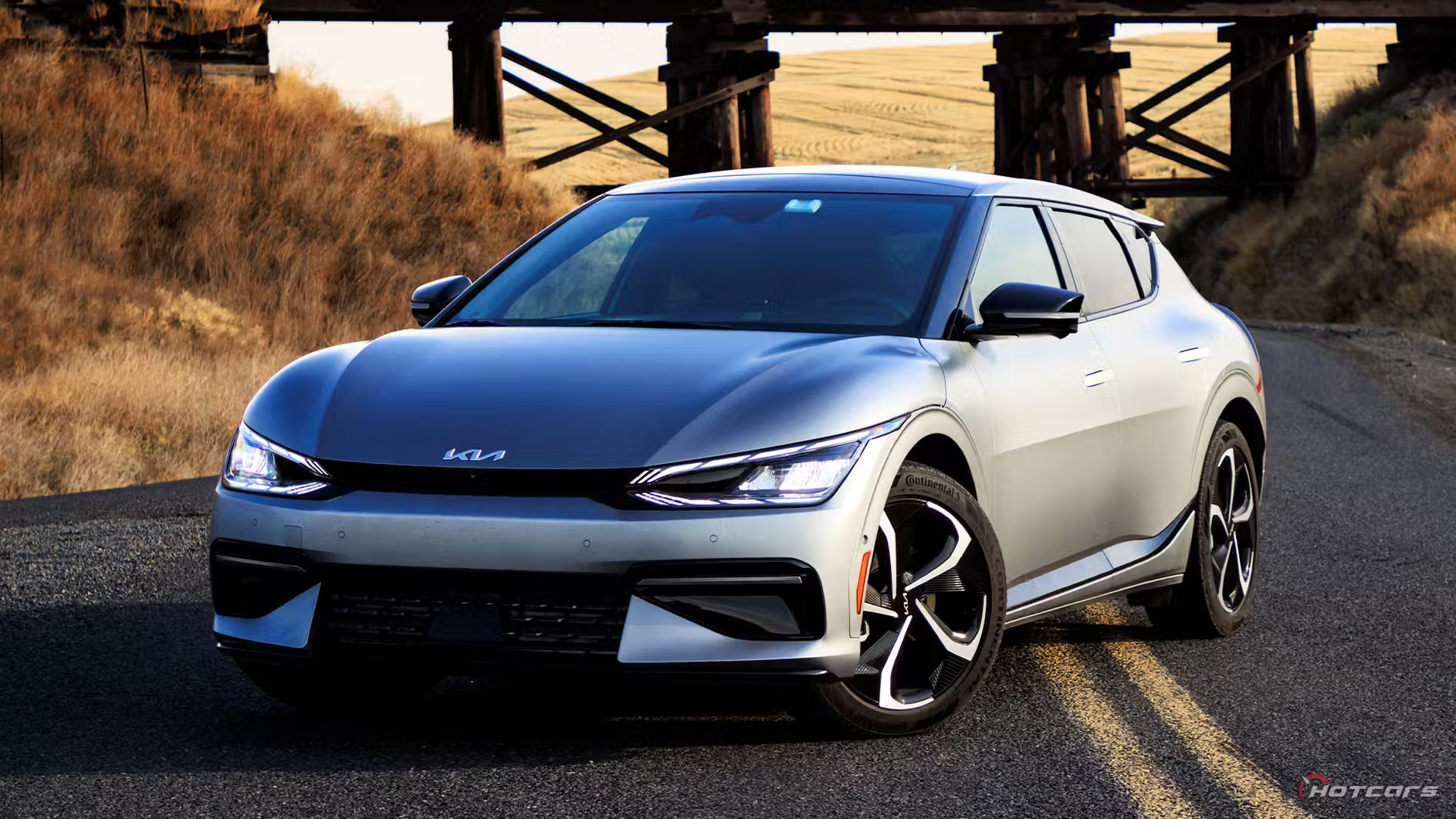
Meanwhile, the 2024 Kia EV6, starting at $42,600, brings a sportier, more aggressive alternative to the Hyundai Ioniq 5. Designed to turn heads with its bold exterior, the EV6 is both stylish and powerful.
The GT-Line All-Wheel Drive version of the EV6 rockets from 0 to 60 mph in just 4.7 seconds, rivaling even the Ford Mustang Mach-E in terms of performance. Inside, the EV6 boasts a spacious cabin with engaging driving dynamics, making it an excellent choice for those seeking a balance of power, range, and a more thrilling driving experience.
The Kia EV6 is a dynamic and futuristic all-electric crossover that stands as a bold statement in Kia’s transition toward electric mobility. Built on the Hyundai Motor Group’s Electric-Global Modular Platform (E-GMP), shared with the Hyundai Ioniq 5, the EV6 offers an enticing blend of performance, technology, and range.
With its sporty design, advanced electric powertrains, and a high-tech, spacious interior, the EV6 is designed to compete with the best in the growing EV segment. This review will go into the key features of the Kia EV6, including its design, performance, range, interior, safety, and value proposition.
The exterior design of the Kia EV6 is one of its most striking features, embodying a blend of modern sportiness and aerodynamic efficiency. Its aggressive front end is characterized by slim LED headlights and Kia’s new “digital tiger face” grille, which gives it a distinctive and futuristic appearance.
The bold lines and sculpted body panels emphasize its athletic stance, while the long wheelbase and short overhangs enhance the vehicle’s aerodynamic efficiency and visual appeal. The sloping roofline and rear spoiler contribute to its sleek, fastback profile, setting it apart from more conventional-looking crossovers. The EV6’s rear design is equally impressive, with a full-width LED taillight that wraps around the tailgate, giving the car a futuristic and high-tech vibe, especially when illuminated at night.
Under the hood, or rather, beneath the floor, the Kia EV6 offers a range of electric powertrain options, catering to different driving needs. The base model, typically called the EV6 Light, features a single rear-mounted electric motor producing around 167 horsepower, paired with a 58 kWh battery pack. This configuration is ideal for city commuting and offers a balance of performance and efficiency.
For those seeking more power, the EV6 Wind and GT-Line models come with a larger 77.4 kWh battery and a more powerful motor setup, delivering 225 horsepower in the rear-wheel-drive version and up to 320 horsepower in the all-wheel-drive (AWD) dual-motor version.
The AWD variant provides quicker acceleration, with a 0-60 mph time of just 4.6 seconds, making it one of the more performance-oriented options in the electric crossover market. For those craving the ultimate performance, Kia also offers a high-performance GT model, which boasts 576 horsepower and can accelerate from 0-60 mph in a blistering 3.5 seconds, rivaling even some sports cars.
When it comes to range, the Kia EV6 is highly competitive. The entry-level model with the smaller battery offers an estimated range of around 232 miles on a single charge, while the models with the larger 77.4 kWh battery pack can deliver up to 310 miles of range, depending on the drivetrain configuration. This puts the EV6 on par with rivals like the Tesla Model Y and Ford Mustang Mach-E in terms of electric range.
The EV6 also excels in its charging capabilities, supporting 800-volt ultra-fast charging. This allows the vehicle to charge from 10% to 80% in just 18 minutes when using a 350-kW fast charger, making long-distance travel more convenient. For home charging, the EV6 can be fully charged overnight using a Level 2 charger, which is ideal for daily use.
Inside, the Kia EV6 offers a spacious and modern cabin with a focus on technology and sustainability. The long wheelbase and flat floor provide ample legroom for both front and rear passengers, making the EV6 a comfortable choice for families and long journeys. The materials used in the interior are eco-friendly, with options for vegan leather upholstery and recycled fabrics, emphasizing the EV6’s commitment to sustainability.
The dashboard is dominated by dual 12.3-inch curved displays—one for the digital instrument cluster and the other for the infotainment system—creating a sleek, high-tech cockpit. The infotainment system is powered by Kia’s latest UVO interface, which is responsive and easy to find, offering features like Apple CarPlay, Android Auto, and integrated navigation. Wireless charging, multiple USB ports, and an available premium Meridian sound system enhance the tech-forward experience of the EV6.
Cargo space in the Kia EV6 is practical for a crossover, with around 24.4 cubic feet of space behind the rear seats, expanding to 50.2 cubic feet with the rear seats folded down. While this may be slightly less than some traditional SUVs, it’s more than adequate for everyday needs, whether it’s groceries, luggage, or outdoor gear. Additionally, the EV6 features a front trunk (frunk) that provides extra storage space, though it’s relatively small compared to some competitors.
Safety is another strong point for the Kia EV6, with a comprehensive suite of advanced driver assistance systems (ADAS) that come standard or are available depending on the trim. These include forward collision-avoidance assist, blind-spot monitoring, lane-keeping assist, and adaptive cruise control with stop-and-go functionality.
Higher trims offer more advanced features like Kia’s Highway Driving Assist 2, which provides semi-autonomous driving capabilities, allowing the vehicle to maintain its lane and follow the flow of traffic on highways. The EV6 is also equipped with a surround-view camera system, parking sensors, and rear cross-traffic alert, further enhancing driver confidence and safety in busy urban environments.
In terms of value, the Kia EV6 is priced competitively within the electric crossover market, with the base model starting in the mid-$40,000 range, before federal and state EV incentives. This positions the EV6 as a more affordable alternative to premium electric crossovers like the Tesla Model Y, while still offering comparable performance and range.
The higher trim levels, including the GT-Line and the performance-oriented GT, come at a higher price but offer additional luxury features and more powerful electric motors, making them appealing to buyers seeking a more premium or sporty experience. Kia’s generous warranty coverage, including a 10-year/100,000-mile powertrain and battery warranty, adds significant value and peace of mind for long-term ownership.
While the Kia EV6 offers many advantages, there are a few potential drawbacks to consider. The sloping roofline and sporty design, while visually appealing, may compromise rear visibility and slightly reduce headroom for taller passengers in the back seat.
Additionally, while the EV6’s infotainment system is generally intuitive, the absence of wireless Apple CarPlay and Android Auto may disappoint some tech-savvy users, requiring a wired connection instead. Finally, while the EV6 supports ultra-fast charging, access to 800-volt charging stations can still be limited depending on location, which could be a consideration for long-distance travel planning.
The Kia EV6 is a standout in the electric vehicle market, offering an appealing mix of style, performance, range, and technology. Its futuristic design, high-quality interior, and competitive pricing make it an excellent option for those looking to transition to electric driving without sacrificing the versatility and comfort of a crossover.
Whether you’re seeking a practical daily driver, a family-friendly EV, or a high-performance electric vehicle, the Kia EV6 has something to offer. With its strong warranty and commitment to sustainability, the EV6 represents an exciting step forward for Kia in the era of electric mobility.
7) Kia EV9
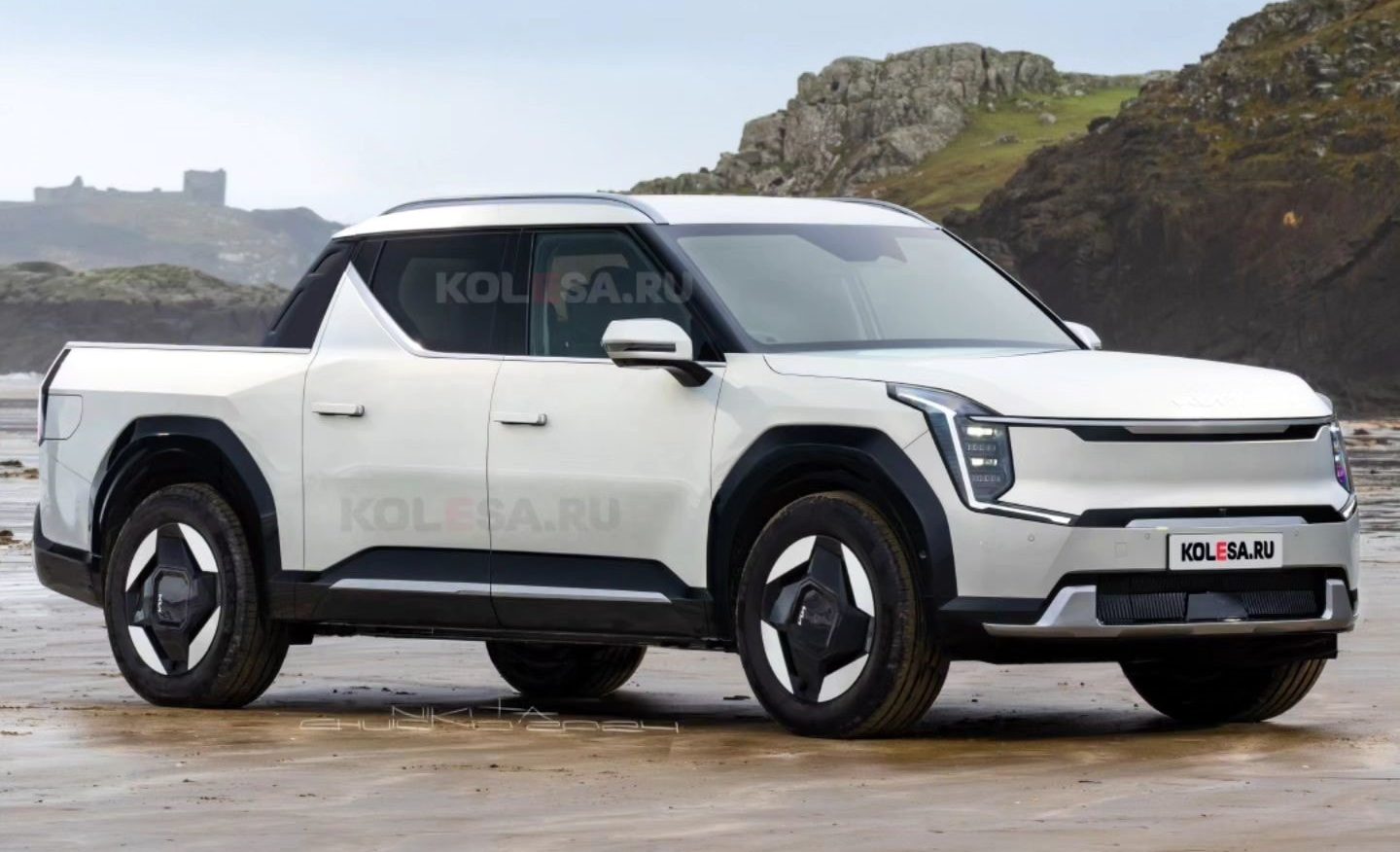
The 2024 Kia EV9 is a standout as one of the few midsize three-row electric SUVs available. Following the success of the smaller Kia EV6, the EV9 brings spaciousness, an eye-catching design, and solid performance to the table.
While it comes with a higher price tag, starting at $54,900, it delivers great value for buyers seeking a family-friendly electric SUV. The EV9 offers up to 304 miles of driving range in the Light Long Range model, priced at $59,200, and fast charging capabilities that add 190 miles in just 23 minutes, making it a strong contender in its niche segment.
The Kia EV9 is Kia’s first all-electric three-row SUV, marking a significant milestone in the brand’s transition to electric vehicles (EVs) by expanding its offerings into the family-friendly SUV segment. Built on the same Electric-Global Modular Platform (E-GMP) as the Kia EV6, the EV9 is designed to blend the practicality and versatility of a large SUV with the environmental and performance benefits of an electric powertrain. This review dives into the key features of the Kia EV9, covering its design, performance, range, interior space, safety features, and value proposition, offering insights into what makes this electric SUV stand out in an increasingly competitive market.
The exterior design of the Kia EV9 is bold and futuristic, combining modern electric vehicle aesthetics with the ruggedness expected from a large SUV. It showcases Kia’s new design language, dubbed “Opposites United,” which emphasizes contrasts between sleekness and muscularity. The front end of the EV9 features Kia’s “Digital Tiger Face” with slim, angular LED headlights and a closed-off grille that emphasizes its electric nature.
The EV9’s large and boxy silhouette gives it a commanding road presence, while the smooth body lines, sculpted fenders, and strong shoulder lines add to its dynamic and robust look. The rear of the EV9 is equally striking, with vertical LED taillights that extend up to the roofline, creating a distinctive light signature. The high ground clearance, large wheels, and bold stance make the EV9 visually appealing to both off-road enthusiasts and urban commuters.
In terms of performance, the Kia EV9 offers different powertrain configurations to suit varying needs. The base model is equipped with a single rear-mounted electric motor delivering approximately 200 horsepower and 258 lb-ft of torque, making it ideal for daily driving and city commuting.
For those seeking more power and capability, Kia offers an all-wheel-drive (AWD) version with dual motors, producing around 380 horsepower and 442 lb-ft of torque. This configuration not only enhances acceleration, but also improves traction and handling, especially in challenging road conditions or off-road environments.
The AWD model is expected to achieve a 0-60 mph time in under 6 seconds, which is impressive for a vehicle of its size. The EV9’s electric powertrain offers a smooth and quiet driving experience, with the instant torque from the electric motors providing quick and effortless acceleration. Additionally, the EV9’s ride quality is enhanced by its low center of gravity, thanks to the battery pack being mounted beneath the floor, which also helps with stability and cornering.
One of the most critical aspects of any electric vehicle is its range, and the Kia EV9 delivers a solid performance in this department. The EV9 is expected to come with two battery options: a standard 77.4 kWh battery pack and a larger 100 kWh battery. The larger battery pack is expected to provide a range of up to 300 miles on a single charge, making the EV9 suitable for long-distance travel as well as daily driving.
Like the EV6, the EV9 supports 800-volt fast charging, allowing it to charge from 10% to 80% in around 20-30 minutes when using a 350-kW DC fast charger. This rapid charging capability significantly reduces downtime during long trips, making the EV9 a practical choice for road trips and family vacations. For home charging, the EV9 can be fully recharged overnight using a Level 2 charger, providing convenience for everyday use.
Inside, the Kia EV9 focuses on space, comfort, and cutting-edge technology, offering a roomy and well-designed cabin with seating for up to seven passengers. The long wheelbase, flat floor, and large windows create a spacious and airy atmosphere, while the use of sustainable materials, such as recycled plastics and eco-friendly fabrics, emphasizes Kia’s commitment to sustainability.
The dashboard is dominated by a dual-display setup, featuring a 12.3-inch digital instrument cluster and a 12.3-inch infotainment touchscreen, seamlessly integrated into a single panel.
The infotainment system includes Kia’s latest UVO interface, with wireless Apple CarPlay, Android Auto, and voice recognition. The EV9 also offers a range of connectivity features, including over-the-air updates, remote vehicle access, and real-time navigation. Higher trims may include a premium audio system, a head-up display, and ambient lighting to enhance the driving experience.
One of the standout features of the EV9’s interior is its flexibility. The second-row seats can swivel to face the third row, making it easier for passengers to interact and creating a more social and comfortable environment, particularly during long trips.
The third row is spacious enough to accommodate adults, a rarity in many three-row SUVs. The EV9 also offers ample cargo space, with the ability to fold down the second and third rows to create a large, flat loading area, providing excellent versatility for families or those with active lifestyles. Whether it’s carrying luggage, sports equipment, or groceries, the EV9 offers practical storage solutions to meet various needs.
Safety is a top priority for the Kia EV9, which is equipped with an extensive suite of advanced driver assistance systems (ADAS). Standard safety features typically include forward collision-avoidance assist, blind-spot monitoring, lane-keeping assist, and adaptive cruise control. Higher trims may offer more advanced features like Kia’s Highway Driving Assist 2, which allows for semi-autonomous driving on highways, and a 360-degree camera system for easier parking and maneuvering in tight spaces.
The EV9 is also expected to be one of the first Kia models to offer the brand’s latest autonomous driving technology, which could allow for hands-free driving in certain conditions, further enhancing long-distance driving safety and convenience. Given Kia’s strong track record in safety, the EV9 is expected to achieve high safety ratings from agencies like the National Highway Traffic Safety Administration (NHTSA) and the Insurance Institute for Highway Safety (IIHS).
In terms of value, the Kia EV9 is positioned as a premium electric SUV, with pricing expected to start in the mid-$50,000 range, depending on the trim level and battery configuration. This makes it one of the more affordable three-row electric SUVs, especially when compared to rivals like the Tesla Model X or Rivian R1S, which come with significantly higher price tags.
With federal and state incentives factored in, the EV9 becomes even more attractive for families looking to make the switch to electric driving without sacrificing space, comfort, or performance. Kia’s industry-leading warranty, which includes a 10-year/100,000-mile powertrain and battery warranty, adds significant value and peace of mind for long-term ownership.
While the Kia EV9 has many strengths, there are a few potential drawbacks to consider. Its large size and weight, while offering spaciousness and comfort, may impact overall efficiency and handling compared to smaller electric vehicles.
Additionally, while the EV9’s range is competitive, some drivers may find the range on the AWD models slightly lower than expected when factoring in colder climates or off-road driving conditions. Access to ultra-fast charging stations may still be limited in certain regions, which could affect long-distance travel for those who frequently drive in rural or less developed areas.
The Kia EV9 represents a significant step forward in the electric SUV market, offering a unique combination of size, performance, technology, and affordability. Its spacious and versatile interior, advanced safety features, and competitive electric range make it a compelling choice for families and adventurers alike.
With its bold design and cutting-edge technology, the EV9 is poised to attract a wide range of buyers, from those seeking a practical family vehicle to early adopters looking for the latest in electric mobility. As Kia continues to expand its electric lineup, the EV9 stands as a testament to the brand’s commitment to innovation and sustainability in the rapidly evolving automotive.
6) 2024 Volkswagen ID.4
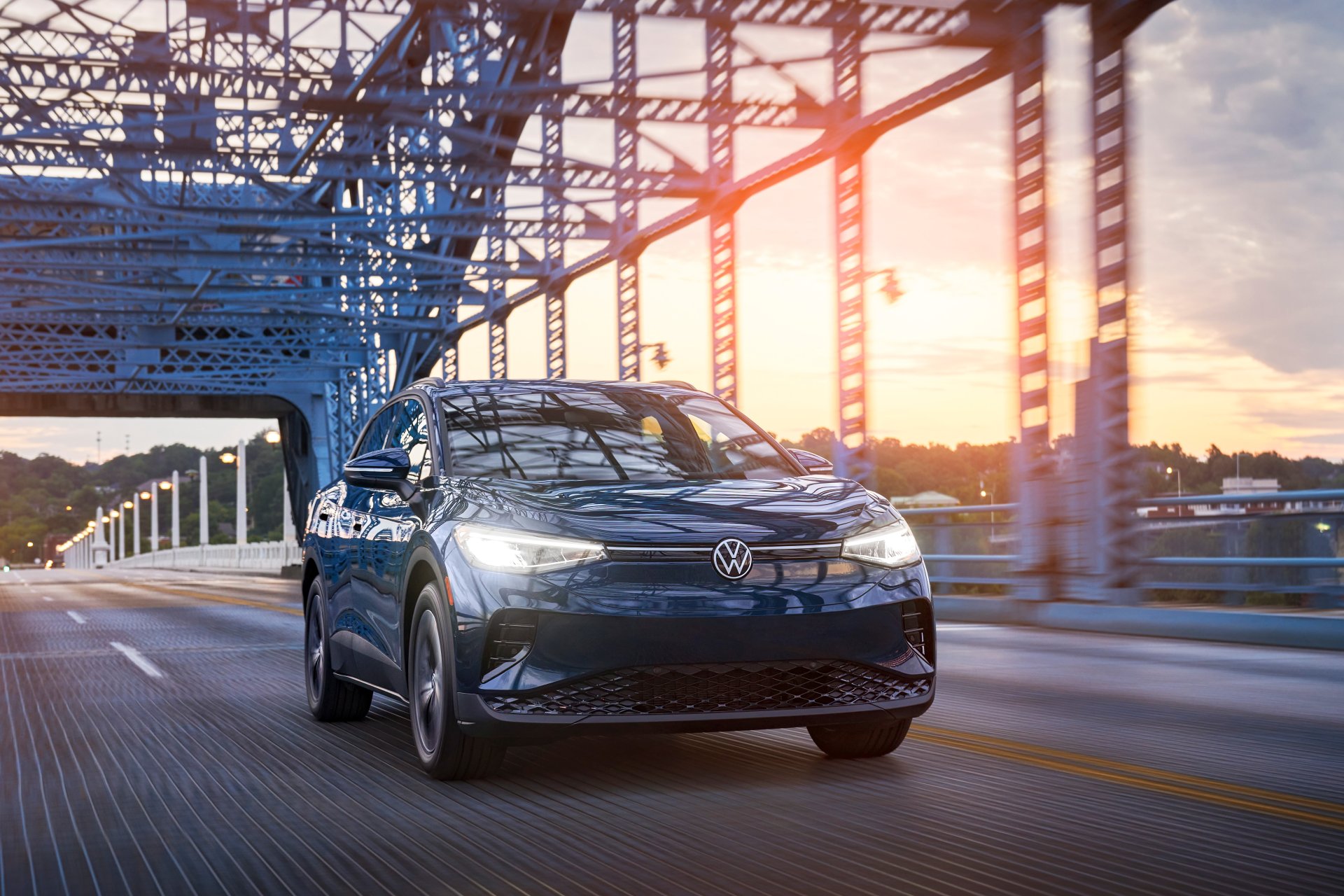
The 2024 Volkswagen ID.4 Standard starts at $39,735, but thanks to the $7,500 federal EV tax credit, its price can drop to an attractive $32,235. The ID.4 offers a variety of trims to suit different needs, with options ranging from the Standard to the S, Pro, Pro S, and Pro S Plus.
What makes the VW ID.4 stand out is the flexibility of its trims. For those seeking an affordable electric SUV for daily driving, the ID.4 Standard offers solid performance at a reasonable price. However, if the range is a priority, the ID.4 Pro, starting at $44,875, provides an impressive 291 miles of driving range.
For drivers looking for a more luxurious experience, the ID.4 S ($44,855) offers just 206 miles of range but comes loaded with premium features, including massage front seats, a panoramic glass roof, V-Tex leatherette upholstery, a heated steering wheel, and customizable 30-color ambient lighting.
The Volkswagen ID.4 is a pivotal entry in the rapidly expanding electric vehicle market, representing Volkswagen’s ambitious shift toward electrification. As the brand’s first all-electric SUV, the ID.4 combines practicality, performance, and innovative technology, making it an attractive option for families and environmentally-conscious consumers alike.
Built on the MEB platform, which is specifically designed for electric vehicles, the ID.4 seeks to deliver a spacious interior, impressive range, and engaging driving dynamics. This review will cover the key features of the Volkswagen ID.4, including its design, performance, range, interior space, safety features, and overall value proposition.
The exterior design of the Volkswagen ID.4 is characterized by its sleek, aerodynamic silhouette, which not only contributes to its modern aesthetic but also enhances its efficiency. The front end features a minimalist grille, with the signature Volkswagen logo prominently displayed. The LED headlights are sharp and angular, giving the ID.4 a distinctive look that aligns with contemporary design trends.
The body profile is clean and uncluttered, with smooth lines that create a sense of fluidity. The rear of the ID.4 is equally appealing, featuring a full-width LED light bar that connects the taillights, enhancing its modern flair. The overall design language reflects Volkswagen’s commitment to sustainability and innovation while maintaining the brand’s identity.
Under the hood, the Volkswagen ID.4 offers several powertrain options, catering to different driving preferences. The base model typically features a rear-mounted electric motor that produces approximately 201 horsepower and 229 lb-ft of torque. This setup allows for responsive acceleration, making it suitable for daily commuting and highway driving.
For those seeking enhanced performance, the ID.4 also offers an all-wheel-drive (AWD) version, which adds a front motor to increase total output to around 302 horsepower and 339 lb-ft of torque. The AWD variant can accelerate from 0 to 60 mph in just over 5 seconds, providing a spirited driving experience that rivals many traditional SUVs. The ID.4’s electric powertrain ensures smooth and quiet operation, with instant torque delivering seamless acceleration in various driving conditions.
Range is a crucial aspect of any electric vehicle, and the ID.4 performs admirably in this regard. Equipped with a standard 77 kWh battery pack, the ID.4 is expected to offer an estimated range of around 250 miles on a single charge, depending on the driving conditions and configuration.
This range is competitive within its segment, making it suitable for both daily commuting and longer road trips. The ID.4 supports fast charging capabilities, allowing drivers to charge from 5% to 80% in about 38 minutes when using a DC fast charger. For home charging, the ID.4 can be fully recharged overnight with a Level 2 charger, ensuring that it’s ready for daily use.
Inside, the Volkswagen ID.4 boasts a spacious and user-friendly cabin designed with comfort and convenience in mind. The interior layout is minimalist, with a focus on digital interfaces and sustainability.
The materials used throughout the cabin are eco-friendly, reflecting Volkswagen’s commitment to reducing its environmental footprint. The ID.4 offers ample passenger space, with comfortable seating for up to five adults and generous headroom and legroom in both the front and rear seats. The rear seats can accommodate three passengers comfortably, making it an excellent choice for families.
The dashboard is highlighted by a 10-inch or optional 12-inch touchscreen infotainment system that is responsive and easy to find. The infotainment system includes features like Apple CarPlay, Android Auto, and built-in navigation, providing seamless connectivity for users.
The touch-sensitive controls for climate settings and other functions can take some getting used to, but they add to the overall modern aesthetic of the interior. Additionally, the ID.4 features a digital instrument cluster that provides essential driving information at a glance, enhancing the driving experience.
Cargo space in the ID.4 is practical for a compact SUV, offering around 30.3 cubic feet of storage behind the rear seats. When the rear seats are folded down, this expands to approximately 64.2 cubic feet, providing ample room for luggage, sports equipment, or other gear. The low loading floor and wide opening make it easy to access the cargo area, enhancing the vehicle’s usability for everyday tasks.
Safety is a top priority for Volkswagen, and the ID.4 comes equipped with a comprehensive suite of advanced driver assistance systems (ADAS). Standard safety features typically include forward collision warning, automatic emergency braking, blind-spot monitoring, and adaptive cruise control.
Higher trims may offer additional features such as a surround-view camera system, lane-keeping assist, and park assist, which simplifies parking in tight spaces. The ID.4 is expected to perform well in safety ratings, thanks to its robust construction and advanced safety technologies.
In terms of value, the Volkswagen ID.4 is competitively priced within the electric SUV segment. The base model generally starts in the mid-$40,000 range, which places it alongside other popular electric SUVs such as the Ford Mustang Mach-E and the Kia EV6.
The ID.4’s price point, combined with its range, features, and Volkswagen’s strong reputation for reliability, makes it an appealing option for consumers considering a transition to electric driving. Moreover, federal and state incentives for electric vehicles can further reduce the overall cost, making the ID.4 a smart investment for environmentally-conscious buyers.
While the ID.4 offers many advantages, there are a few potential drawbacks to consider. The infotainment system’s reliance on touch-sensitive controls may frustrate some users who prefer physical buttons for climate and audio settings.
Additionally, the ID.4’s handling, while competent, may not be as sporty or engaging as some competitors, which could be a consideration for driving enthusiasts. Finally, while the cargo space is practical, it may not be as spacious as some larger SUVs in its class, which could be a factor for buyers prioritizing maximum storage capacity.
The Volkswagen ID.4 is a significant addition to the electric vehicle, offering a compelling combination of style, performance, range, and practicality. Its modern design, spacious interior, and advanced technology make it an excellent choice for families and individuals looking for an electric SUV that meets their everyday needs.
As Volkswagen continues to expand its electric lineup, the ID.4 serves as a testament to the brand’s commitment to sustainable mobility and innovation in the automotive industry. With its strong performance, competitive pricing, and robust safety features, the ID.4 stands poised to be a leader in the transition toward a more sustainable future.
5) 2024 Ford Mustang Mach-E
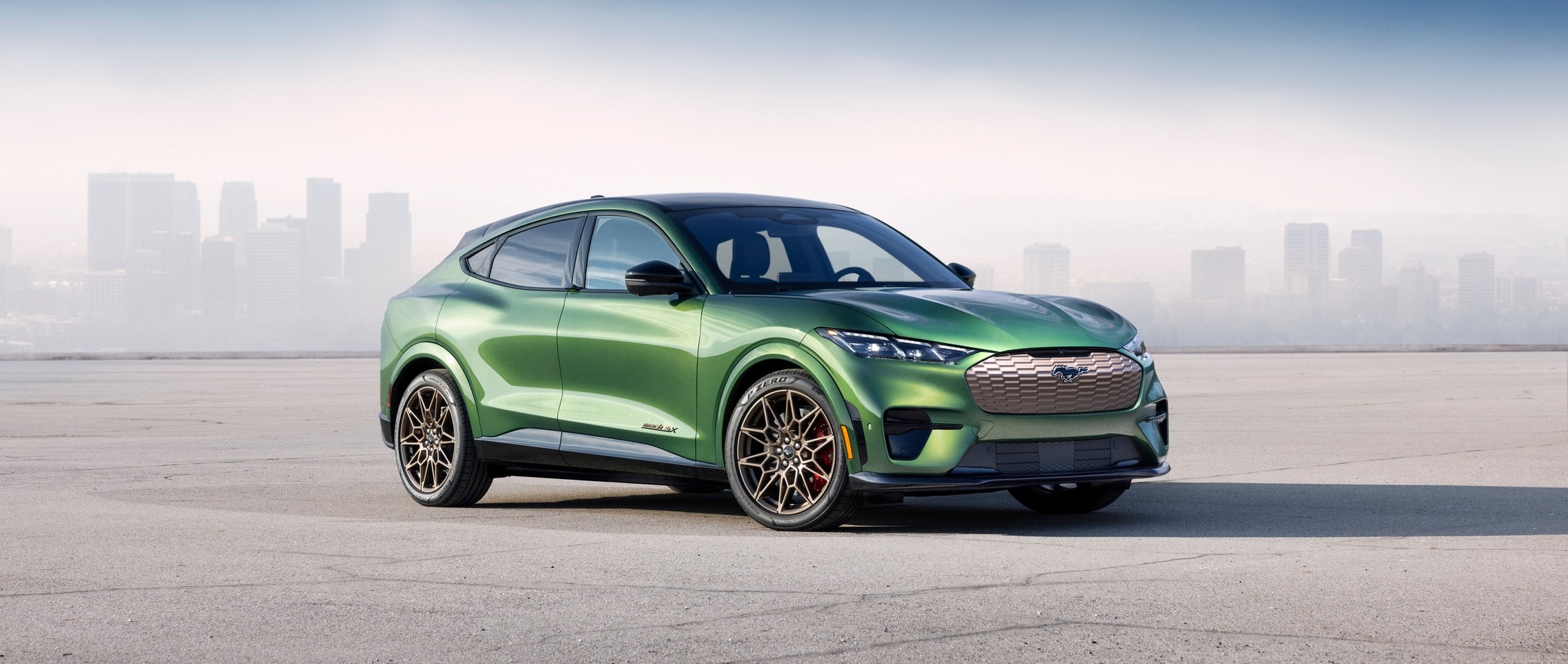
The 2024 Ford Mustang Mach-E starts at $39,995, marking the first-ever electric version of the iconic Mustang nameplate. While its body style is completely different from the classic Mustang muscle car, this small electric SUV still packs enough punch to live up to its heritage. The Mach-E’s GT trim, in particular, offers thrilling performance, rocketing from 0 to 60 mph in just 3.3 seconds.
While the Mach-E may not be a traditional Mustang, it’s a competitive electric SUV that takes on rivals like the Hyundai Ioniq 5 and Tesla Model Y. Stylish and dynamic, the Mach-E is one of the most visually striking electric SUVs on the market today, blending performance with futuristic design.
The Ford Mustang Mach-E represents a groundbreaking shift for the iconic Mustang brand, venturing into the electric vehicle (EV) segment while retaining the performance and spirit that has defined Ford’s muscle cars for decades.
As an all-electric SUV, the Mach-E combines stylish design, impressive performance, cutting-edge technology, and practicality, making it a compelling choice for those looking to embrace electric mobility without compromising on the driving experience. This review explores the key features of the Ford Mustang Mach-E, including its design, performance, range, interior space, technology, safety features, and overall value proposition.
The design of the Ford Mustang Mach-E is one of its standout attributes, seamlessly blending the classic Mustang elements with modern SUV aesthetics. At the front, the Mach-E features a closed grille, a hallmark of electric vehicles, while the sleek headlights and distinctive Mustang-inspired LED daytime running lights lend it an aggressive look.
The coupe-like roofline adds a sporty flair, reminiscent of the classic Mustang silhouette, while the muscular fenders and sculpted sides create a strong presence on the road. The rear of the Mach-E showcases a bold LED light bar that spans the width of the vehicle, further enhancing its modern and sporty appeal. Available in a variety of vibrant colors, the Mach-E’s design is both eye-catching and functional, designed to improve aerodynamics and efficiency.
Under the hood, the Ford Mustang Mach-E offers multiple powertrain configurations to cater to different performance preferences. The base model typically features a single rear-mounted electric motor, generating around 266 horsepower and 317 lb-ft of torque, which provides smooth and responsive acceleration.
For those seeking a more dynamic driving experience, the Mach-E offers an all-wheel-drive (AWD) version with dual motors, delivering up to 480 horsepower and 634 lb-ft of torque in the high-performance GT variant. The Mach-E GT can sprint from 0 to 60 mph in approximately 3.5 seconds, making it one of the quickest electric SUVs in its class. This performance is complemented by a sport-tuned suspension, ensuring that the Mach-E handles corners with agility and confidence, reflecting the Mustang’s racing heritage.
Range is a critical consideration for any electric vehicle, and the Ford Mustang Mach-E excels in this area as well. Depending on the configuration and battery size, the Mach-E offers an impressive range of up to 300 miles on a single charge.
The standard model typically features a 68 kWh battery, while the extended-range version comes with a 88 kWh battery, which significantly boosts the driving range. The Mach-E supports fast charging capabilities, allowing it to regain approximately 61 miles of range in just 10 minutes when connected to a DC fast charger. For home charging, the Mach-E can be fully charged overnight using a Level 2 charger, making it a practical choice for everyday use.
Inside, the Ford Mustang Mach-E boasts a spacious and tech-forward cabin designed to provide comfort and convenience for both drivers and passengers. The interior features high-quality materials and a modern design, with a focus on sustainability, incorporating recycled materials throughout the cabin. The Mach-E comfortably seats five adults, with ample headroom and legroom in both the front and rear seats.
The cargo area is also generous, offering around 29 cubic feet of space behind the rear seats, which can expand to approximately 59.7 cubic feet when the rear seats are folded down, providing flexibility for luggage or other gear.
The centerpiece of the Mach-E’s interior is its massive 15.5-inch vertically-oriented touchscreen infotainment system, which is powered by Ford’s latest SYNC 4A interface. This system is intuitive and responsive, featuring features like wireless Apple CarPlay, Android Auto, and built-in navigation. The touchscreen allows for easy access to various controls, including climate settings, audio, and vehicle functions, although some drivers may prefer physical buttons for certain tasks.
The Mach-E also offers a digital instrument cluster that provides essential driving information, enhancing the overall user experience. Additionally, the available Bang & Olufsen sound system provides an immersive audio experience for those who appreciate high-quality sound while on the road.
Safety is a top priority for Ford, and the Mustang Mach-E comes equipped with an array of advanced driver assistance systems (ADAS). Standard safety features typically include forward collision warning, automatic emergency braking, blind-spot monitoring, lane-keeping assist, and adaptive cruise control.
Higher trims may offer additional features like Ford’s Co-Pilot360 Assist 2.0, which includes advanced adaptive cruise control with stop-and-go capabilities, evasive steering assist, and a 360-degree camera system for enhanced visibility while parking. With these features, the Mach-E is designed to help protect occupants and enhance the driving experience.
In terms of value, the Ford Mustang Mach-E is competitively priced within the electric SUV segment, with the base model generally starting in the low $50,000 range. This positions it alongside rivals such as the Tesla Model Y and the Volkswagen ID.4, while offering a unique blend of performance, style, and technology.
The Mach-E’s various trim levels allow buyers to choose options that fit their preferences, whether they prioritize performance, range, or features. Additionally, federal and state incentives for electric vehicles can further enhance the value proposition, making the Mach-E a wise investment for consumers looking to transition to electric driving.
While the Ford Mustang Mach-E has many strengths, there are a few potential drawbacks to consider. The reliance on a touchscreen interface for many controls may be distracting for some drivers, particularly those who prefer traditional knobs and buttons for quick adjustments.
Additionally, while the Mach-E’s range is impressive, some competitors may offer slightly better range or charging network access, which could be a consideration for long-distance travelers. Finally, as an SUV with a sporty design, rear visibility may be limited due to the sloping roofline, making rear parking maneuvers potentially more challenging.
The Ford Mustang Mach-E is a remarkable entry into the electric vehicle market, successfully merging the heritage of the Mustang brand with the demands of modern electric mobility. Its striking design, robust performance, impressive range, and advanced technology make it a compelling choice for drivers seeking an electric SUV that delivers on multiple fronts.
As Ford continues to innovate and expand its electric vehicle lineup, the Mach-E stands out as a testament to the brand’s commitment to sustainability and performance. With its competitive pricing and strong value proposition, the Mustang Mach-E is poised to attract a diverse range of buyers, from eco-conscious consumers to driving enthusiasts eager to experience the thrill of electric performance.
4) Rivian’s 2025 R1S
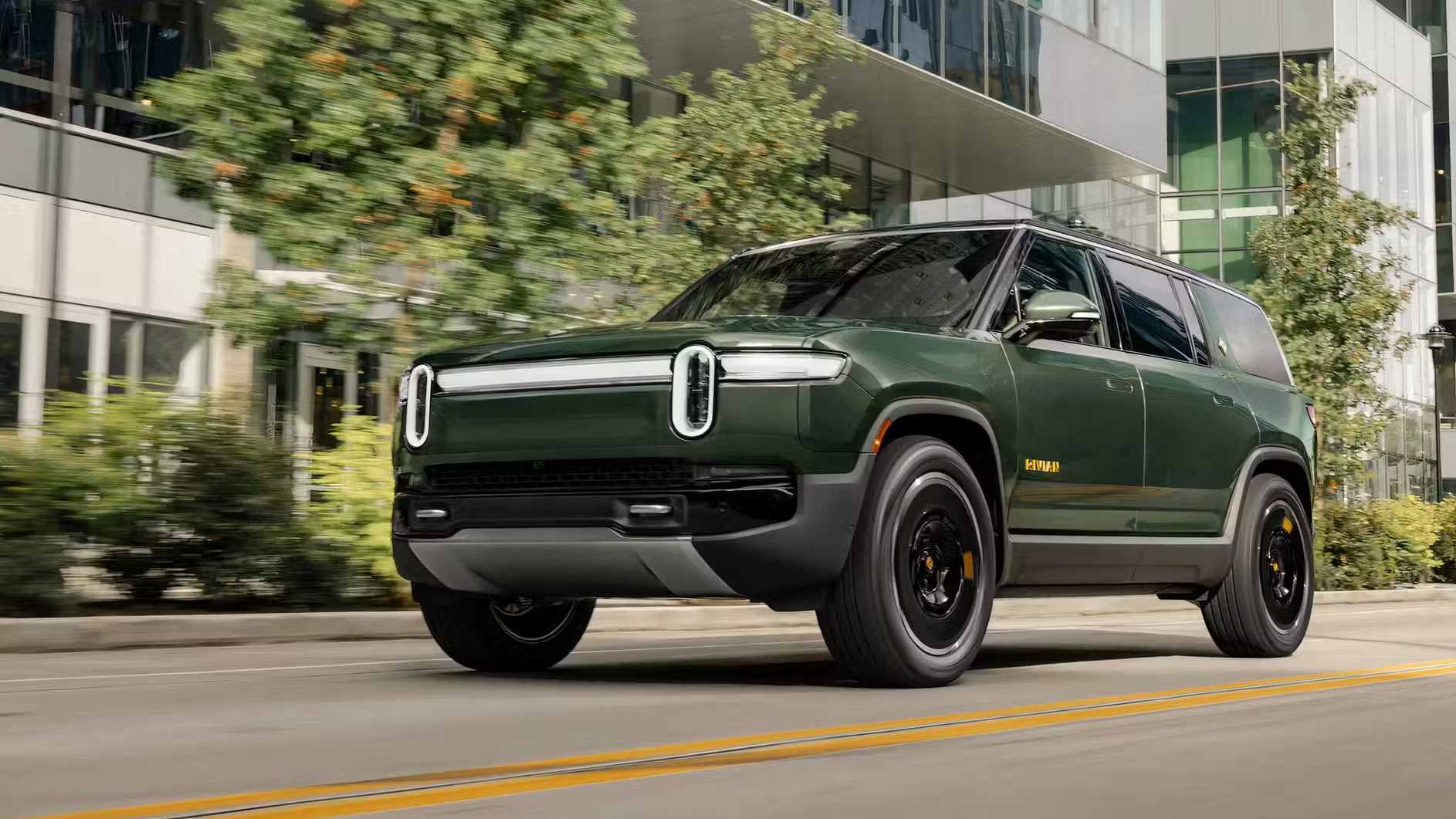
Rivian’s 2025 R1S, starting at $75,900, is a powerful and capable midsize electric SUV designed for adventure. Known for its rugged off-road abilities, it combines family-friendly space with performance that few competitors can match. As one of the first true off-roading electric vehicles, the R1S shines in its segment, delivering a blend of durability, luxury, and capability that appeals to outdoor enthusiasts and electric vehicle fans alike.
The Rivian R1S, set to make waves in the electric SUV market in 2025, represents a significant advancement in electric vehicle (EV) technology, combining ruggedness with luxury and sustainability. Rivian, an American electric vehicle manufacturer, aims to revolutionize the way we think about outdoor adventure and eco-friendly transportation with the R1S.
Designed for both on-road comfort and off-road capability, the 2025 R1S is equipped with cutting-edge features and technologies, making it a strong contender in the growing EV market. This review goes into the key aspects of the Rivian R1S, including its design, performance, range, interior space, technology, safety features, and overall value proposition.
The design of the 2025 Rivian R1S is bold and functional, showcasing a rugged aesthetic that emphasizes its adventure-ready capabilities. The exterior features a distinctive front fascia with LED headlights and a prominent grille, giving the R1S a unique and recognizable look. Its muscular stance and elevated ride height suggest robust off-road capabilities, while the sleek lines and aerodynamic shape enhance efficiency. The rear of the R1S is equally striking, with a sculpted tailgate and stylish LED taillights. Available in a variety of vibrant colors, the R1S is designed to appeal to adventurous consumers seeking a vehicle that reflects their lifestyle.
Under the hood, the Rivian R1S boasts impressive performance metrics, driven by a quad-motor all-wheel-drive system. The standard configuration produces around 600 horsepower, allowing the SUV to accelerate from 0 to 60 mph in just 3 seconds.
level of performance is particularly noteworthy for an electric SUV, providing exhilarating acceleration and responsiveness that rivals many sports cars. For those seeking even more power, Rivian plans to offer an option that increases output to over 800 horsepower, enhancing the R1S’s already impressive capabilities. The advanced suspension system, featuring adjustable air suspension, ensures that the R1S can handle a variety of terrains, from city streets to rugged off-road trails.
Range is a critical factor for electric vehicles, and the Rivian R1S is expected to offer competitive options. The R1S will be available with different battery sizes, including a standard 105 kWh battery and an optional 180 kWh battery, allowing for an estimated range of up to 300 miles or more on a single charge. This range is particularly advantageous for adventurous consumers who may want to explore remote locations without worrying about charging infrastructure.
The R1S supports fast charging capabilities, enabling it to regain up to 140 miles of range in just 20 minutes when connected to a DC fast charger. For home charging, the R1S can be easily charged overnight with a Level 2 charger, making it practical for everyday use.
Inside, the Rivian R1S offers a spacious and luxurious cabin designed to accommodate families and adventure-seekers alike. With seating for up to seven passengers, the R1S provides ample headroom and legroom in all three rows, ensuring comfort for everyone on board. The interior features high-quality materials, including sustainable options, emphasizing Rivian’s commitment to eco-friendly practices. The dashboard is designed with a minimalist approach, showcasing a large touchscreen infotainment system that serves as the central hub for various vehicle functions.
The infotainment system is powered by an intuitive interface, providing access to features like navigation, music, and vehicle settings. It also supports Apple CarPlay and Android Auto, allowing seamless integration with smartphones. The R1S comes equipped with a digital instrument cluster that provides essential driving information, enhancing the driving experience. Additionally, the available premium audio system ensures an immersive sound experience for all passengers, making every journey enjoyable.
Cargo space in the R1S is practical, with approximately 18 cubic feet of storage behind the third row. When the rear seats are folded down, this expands to over 100 cubic feet, providing ample room for gear, luggage, or other equipment for outdoor adventures. The R1S also features a unique “frunk” (front trunk) that offers additional storage, which is ideal for stowing away smaller items securely.
Safety is a top priority for Rivian, and the R1S is equipped with a comprehensive suite of advanced driver assistance systems (ADAS). Standard safety features typically include forward collision warning, automatic emergency braking, lane departure warning, and adaptive cruise control.
Higher trims may offer additional features such as a 360-degree camera system, blind-spot monitoring, and automated parking assist, enhancing safety and convenience for drivers and passengers. The R1S is expected to achieve strong safety ratings due to its robust construction and advanced safety technologies.
In terms of value, the Rivian R1S is positioned competitively within the electric SUV segment, with the starting price generally around $70,000. This pricing places it alongside other premium electric SUVs like the Tesla Model X and the Ford Mustang Mach-E.
3) Tesla Model X

The 2024 Tesla Model X remains one of the most iconic electric SUVs. With a starting price of $79,990, it features the signature falcon wing doors and a spacious cabin, setting it apart from competitors.
The Model X Plaid, in particular, offers jaw-dropping acceleration, going from 0 to 60 mph in just 2.5 seconds thanks to its 1,020 horsepower tri-motor powertrain. Even the Base Model X trim provides a generous 335 miles of range and seamless integration with Tesla’s extensive Supercharging network, making it a premium option for electric SUV buyers seeking luxury, performance, and convenience.
2) Tesla Model Y
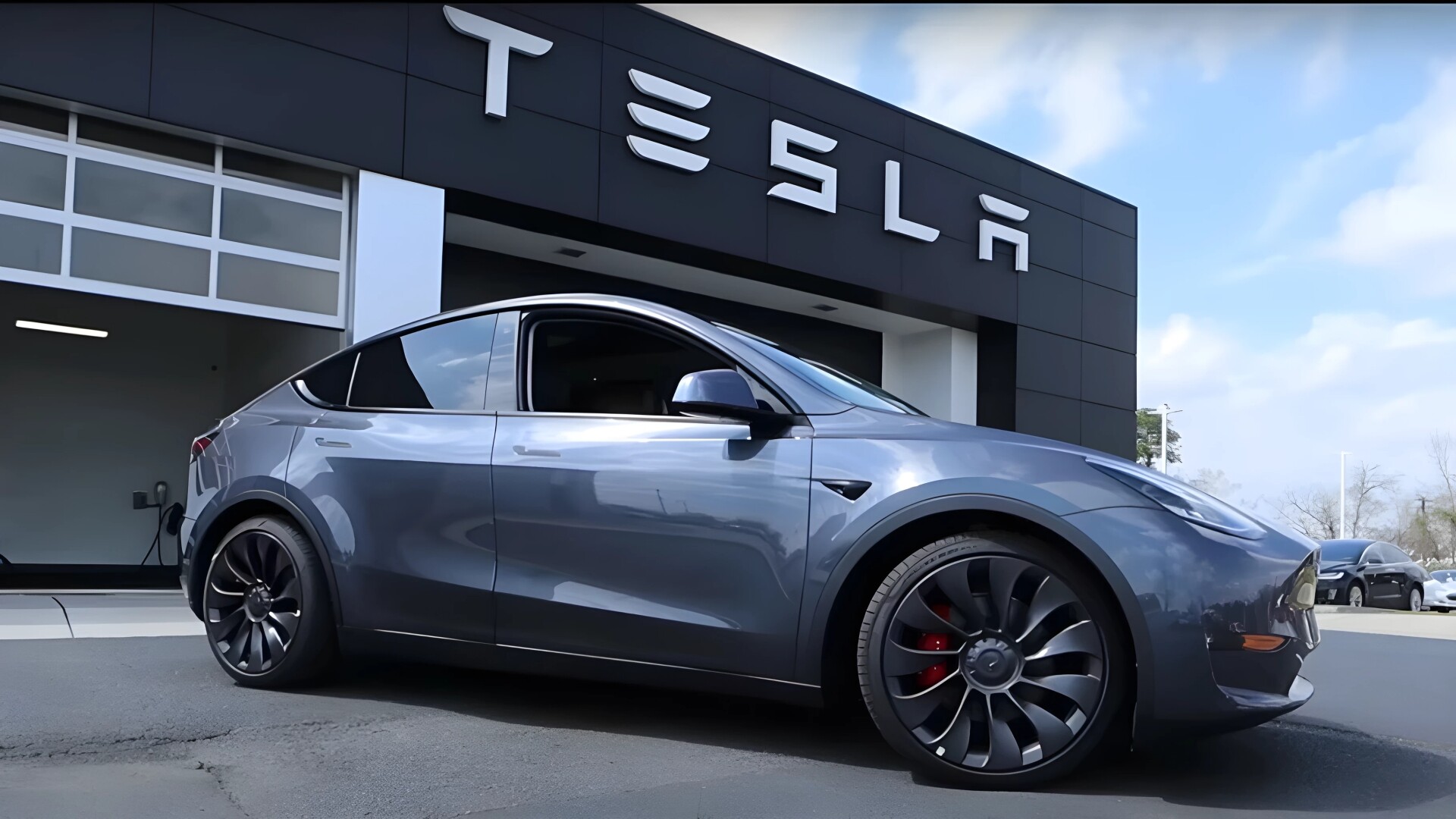
The Tesla Model Y continues to reign as the most popular electric SUV on the market, with global appeal and a reputation for being one of the most desirable electric vehicles available today.
Starting at $44,990 for the 2024 base model, it becomes even more affordable with the federal EV tax credit, bringing its price down to around $37,490. Drivers are drawn to the Model Y for its quick acceleration, refined design, and impressive technology. It’s a fun and practical vehicle, and Tesla’s leadership in the EV industry owes much of its success to the popularity of the Model Y.
1) 2025 Chevrolet Blazer EV
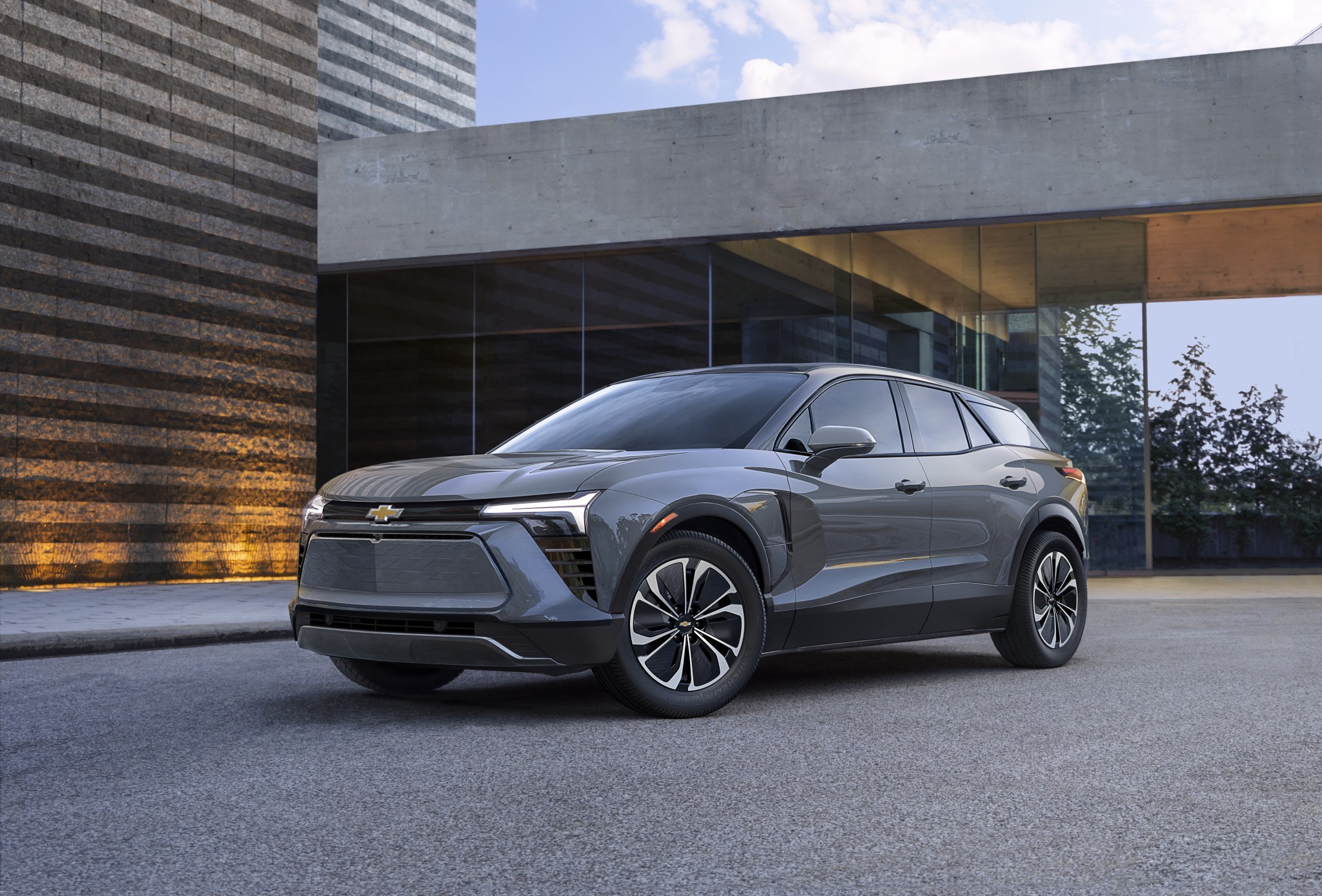
On the other hand, the 2025 Chevrolet Blazer EV is making waves as one of the most affordable midsize electric SUVs after applying the tax credit. Starting at $48,800, its price drops to approximately $41,300 with the $7,500 incentive, making it more budget-friendly than many smaller electric SUVs.
The Blazer EV stands out with its spacious cabin, solid driving range, and sleek design. For drivers seeking an affordable yet stylish midsize electric SUV, the Blazer EV delivers a smooth ride and plenty of appeal in a competitive market.

